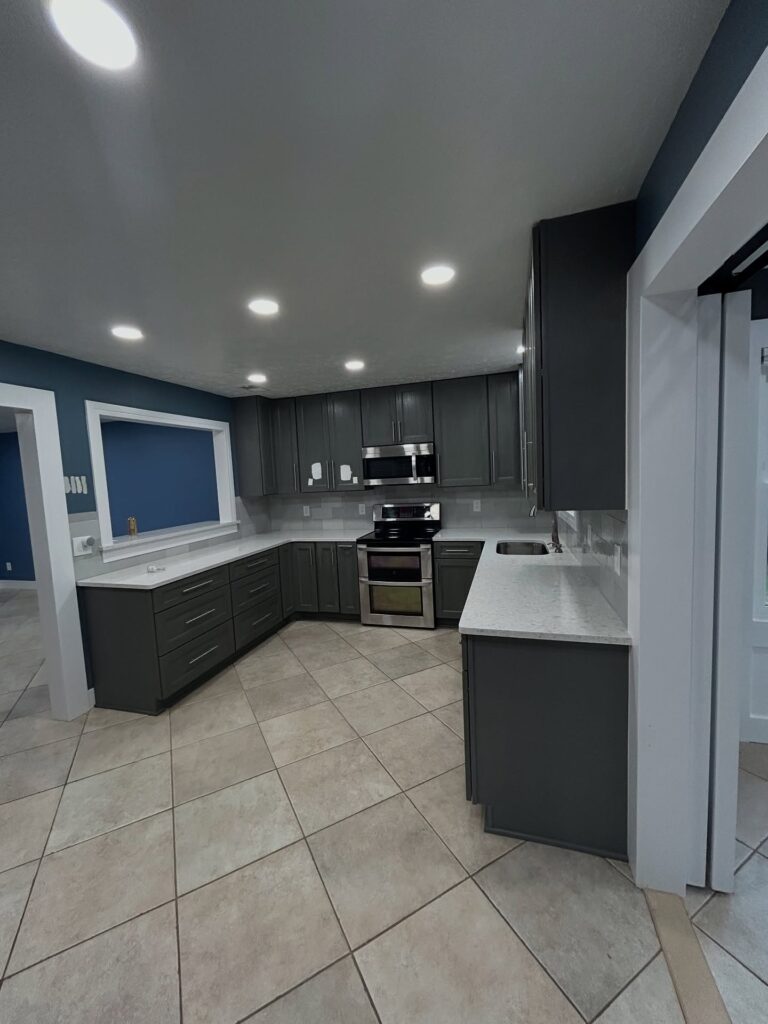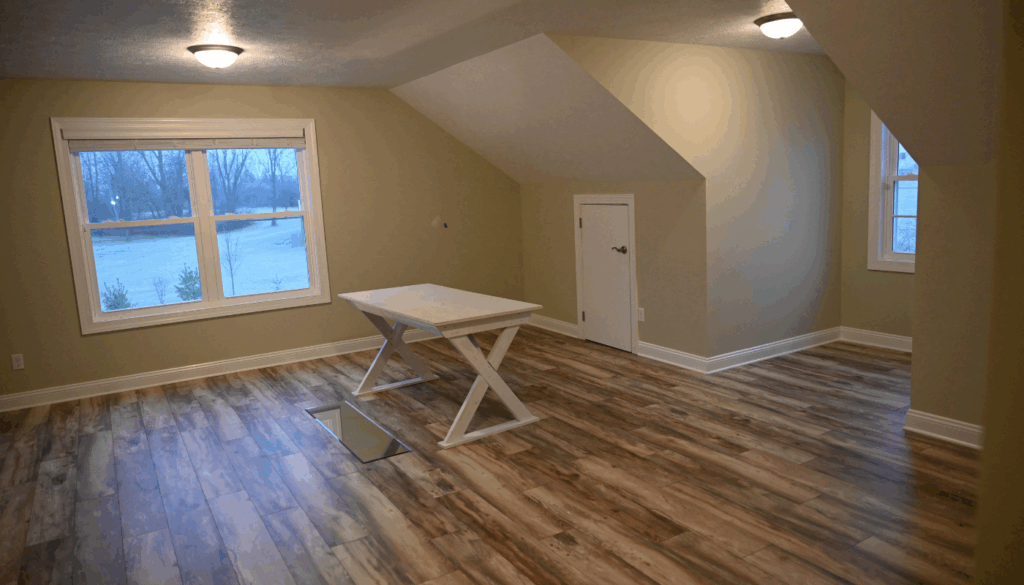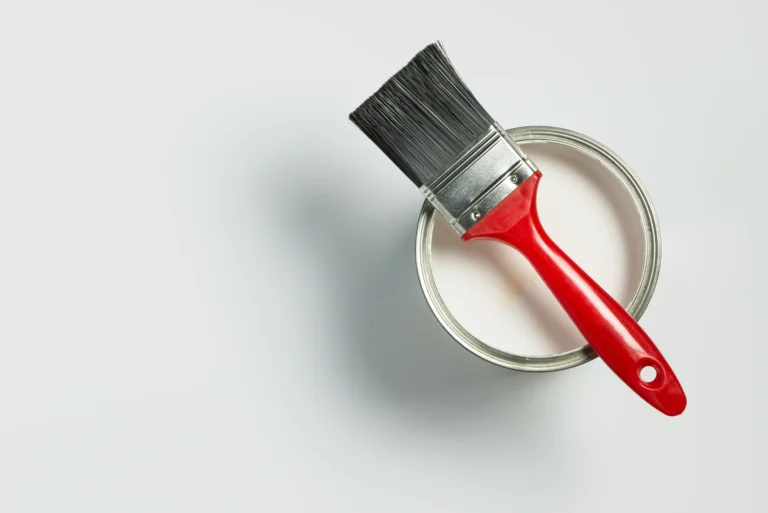When it comes to refreshing a space, a fresh coat of paint goes a long way. It can completely change how a room feels, adding light, warmth, character, and personality. But here’s the thing: painting might seem simple, yet it’s incredibly easy to get wrong. At Four Seasons Interior & Exterior Painting, we’ve seen our fair share of DIY disasters and rushed commercial jobs that didn’t quite hit the mark.
We feel that excellent Interior Painting begins with good preparation and expertise. Whether you’re working on a home project or you’re overseeing a large commercial interior, keeping away from painting pitfalls is what makes the difference between a professional appearance and a redo nightmare.
In this blog, we’re taking you through the most prevalent interior painting errors we’ve encountered, and how to steer clear. If you desire that perfect finish (and less regret), keep reading.

Why Details Matter in Interior Painting?
It’s About More Than Just Color
Yes, the perfect paint color can make a room, but bad application can destroy even the most stunning hue. Runny coats, drips, missed areas, or jagged edges take your eye away from the look you imagined.
Paint Is an Investment
With materials, labor, and time, painting expenditures mount up. Having to repeat a bad job can double your cost. That’s why doing it right the first time isn’t just a talent, it’s a good idea.
Some Interior Painting Mistakes to Avoid for a Perfect Look
1. Bypassing the Prep Work
This is one of the largest blunders we witness. Painting isn’t solely about applying color to walls; it begins far ahead of the roller touching the surface.
Why It Occurs
Individuals are eager to begin or want to save time. However, when you skip the prep, the ultimate consequence always ends up being worse.
What to Do Instead
At Four Seasons Interior & Exterior Painting, we always:
- Clean walls to eliminate dust and grease
- Patch holes and smooth out rough areas
- Use tape to shield trim and edges
- Remove outlet covers and fixtures when needed
This step isn’t glamorous, but trust us, it’s what makes all the difference.
2. Using the Wrong Tools
Paint rollers aren’t one-size-fits-all, and brushes count more than most people realize.
The Problem
We’ve seen projects where walls were painted with brushes meant for trim, or where low-quality rollers left behind lint and uneven strokes. It’s frustrating and hard to fix once it dries.
How to Avoid It
We recommend using:
- High-quality rollers for larger surfaces
- Angled brushes for cutting in along ceilings and trim
- Paint trays that help with even distribution
And when you hire Interior Commercial Painters, they should already be equipped with the best equipment for the work, yet another reason professional assistance tends to be worth it.
3. Not Priming When You Should
Primer is like insuring your walls, paint sticks, covers stains, and looks more vibrant.
When Primer is Necessary
- You’re covering dark colors
- The wall has patches or rough surfaces
- You’re going from glossy to matte finishes
At Four Seasons Interior & Exterior Painting, we never cut corners on primer when the surface requires it. It may seem like an added step, but it results in improved colour accuracy and durability.

4. Selecting the Incorrect Finish
Flat, eggshell, satin, semi-gloss, there’s more to paint than color. The finish has the ability to totally transform how paint appears and holds up over time.
Common Mistake
Using flat paint in high-traffic areas like hallways or kitchens, where it’s likely to scuff or stain.
Our Take
We typically recommend:
- Flat for ceilings or low-traffic bedrooms
- Eggshell or satin for most walls
- Semi-gloss for trim, kitchens, or bathrooms
Not sure what’s best for your space? This is where working with experienced Interior Commercial Painters really helps; we’ve seen every situation and know what works.
5. Overloading the Brush or Roller
More paint isn’t necessarily better coverage. Actually, too much paint results in drips, uneven texture, and a mess you’ll be sorry for.
What We Recommend
Roll using the “W” or “M” motion, which distributes the paint smoothly and avoids thick buildup in specific areas. And don’t rush. Two thin coats always win over one big one.
6. Painting in the Wrong Conditions
Did you know that temperature and humidity influence how paint dries? Painting a room that is too cold, too warm, or too humid can screw with the way your paint dries.
Ideal Conditions
- Room temperature between 50°F and 85°F
- Low to moderate humidity
- Good airflow, but not direct drafts
That’s why we always plan jobs strategically, particularly commercial ones where bigger areas are at stake. It’s not just getting it done; it’s getting it done right.
7. Not Allowing the Paint to Dry Appropriately
Patience is a virtue, particularly with regard to drying times.
What Goes Wrong
Individuals apply the second coat too early or begin relocating furniture prior to the paint’s complete drying. That results in smudges, peeling, or sloppy coverage.
Our Rule of Thumb
Wait at least 2-4 hours between coats, depending on the type of paint. And when it comes to moving things back in, wait a full 24 hours, just in case.
How We Help You Get It Right at Four Seasons Interior & Exterior Painting?
At Four Seasons Interior & Exterior Painting, we apply years of hands-on expertise to every project. Whether we’re painting a family residence or a downtown office building, we do the right thing every time.
Here’s what you receive when you work with us:
- Professional prep and planning before even opening a paint can
- Best-of-the-best tools and materials for a cleaner, smoother finish
- Professional Interior Commercial Painters who care about your time and your space
- A finish that you’ll be proud to display
We don’t skimp. We don’t take shortcuts. We paint as if we were painting our own house, and we believe that makes us different.
Let Four Seasons Interior & Exterior Painting Bring Your Space to Life
Painting doesn’t need to be stressful, and certainly shouldn’t make you regret it. Need assistance with your next project, whether it’s a home makeover or a complete commercial interior? We’re here for you.
Want to avoid the mistakes and achieve a flawless finish on the first try? Call Four Seasons Interior & Exterior Painting today and let our qualified staff manage your Interior Painting with consideration and skill.
FAQs
1. What not to do prior to painting interior walls?
Don’t avoid cleaning and surface prep. Painting over soiled, dusty, or repaired areas without sanding or priming will destroy your finish.
2. How to fix wall painting errors?
Most errors can be rectified by sanding the section, priming as necessary, and repainting with a thin, smooth coat.
3. Can I paint over shiny walls straight away?
Not a good idea. Glossy surfaces must be sanded or deglossed and then primed prior to painting to allow adequate adhesion.
4. How long should I wait before applying additional coats of paint?
Generally, 2 to 4 hours between coats, but always refer to the manufacturer’s directions on the paint can.
5. Is interior painting a good do-it-yourself project?
Yes, for small spaces. But for big rooms or business spaces, hiring experts as Interior Commercial Painters provides you with better output and saves time.
Good Painting Is in the Details
We’ve painted a lot of rooms over the years, and if there’s one thing we know, it’s this: Interior Painting is equal parts art and science. It’s not simply about color, it’s about process, patience, and pride in doing it right.
Here at Four Seasons Interior & Exterior Painting, we’re here to guide you past the missteps and into the outcome that you’re actually looking forward to living or working in. So, if you’re grabbing a roller yourself or calling in the professionals, just know we’re always here to assist you, and we’re passionate about our work.
Let’s bring your place to life, coat by perfect coat.




